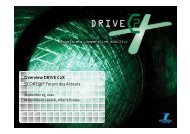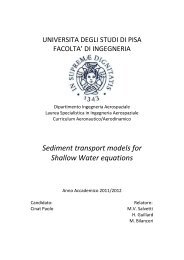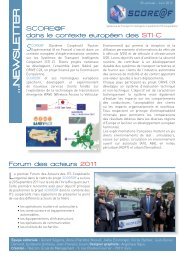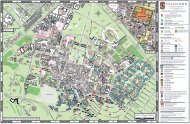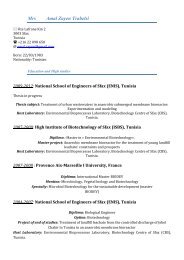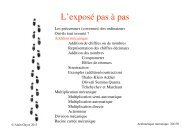Grand Challenges in Computational Biology - Project web sites - Inria
Grand Challenges in Computational Biology - Project web sites - Inria
Grand Challenges in Computational Biology - Project web sites - Inria
You also want an ePaper? Increase the reach of your titles
YUMPU automatically turns print PDFs into web optimized ePapers that Google loves.
The expand<strong>in</strong>g genomics universe• The situation now: huge quantities of noisy, error-ridden and poorlyconnected data– Experimental data are sparse: ~1% of sequences have experimental supportfor their assigned functions– Errors abound: Up to 25% of sequences are mis-annotated [1, 2]– The one-time static annotation protocol does not allow annotations to bemodified <strong>in</strong> the light of new evidence [3]– Expert knowledge is critical to detect<strong>in</strong>g and correct<strong>in</strong>g annotation errors• But manual annotation is expensive and does not scale to the quantity ofsequences be<strong>in</strong>g produced1. Annotation Error <strong>in</strong> Public Databases: Misannotation of Molecular Function <strong>in</strong> Enzyme Superfamilies, Schnoes et al, PLoS<strong>Computational</strong> <strong>Biology</strong> 20092. Phylogenomic <strong>in</strong>ference of prote<strong>in</strong> molecular function: advances and challenges," Sjolander, Bio<strong>in</strong>formatics 20043. Genome re-annotation: a wiki solution? Salzberg, Genome <strong>Biology</strong> 2007




